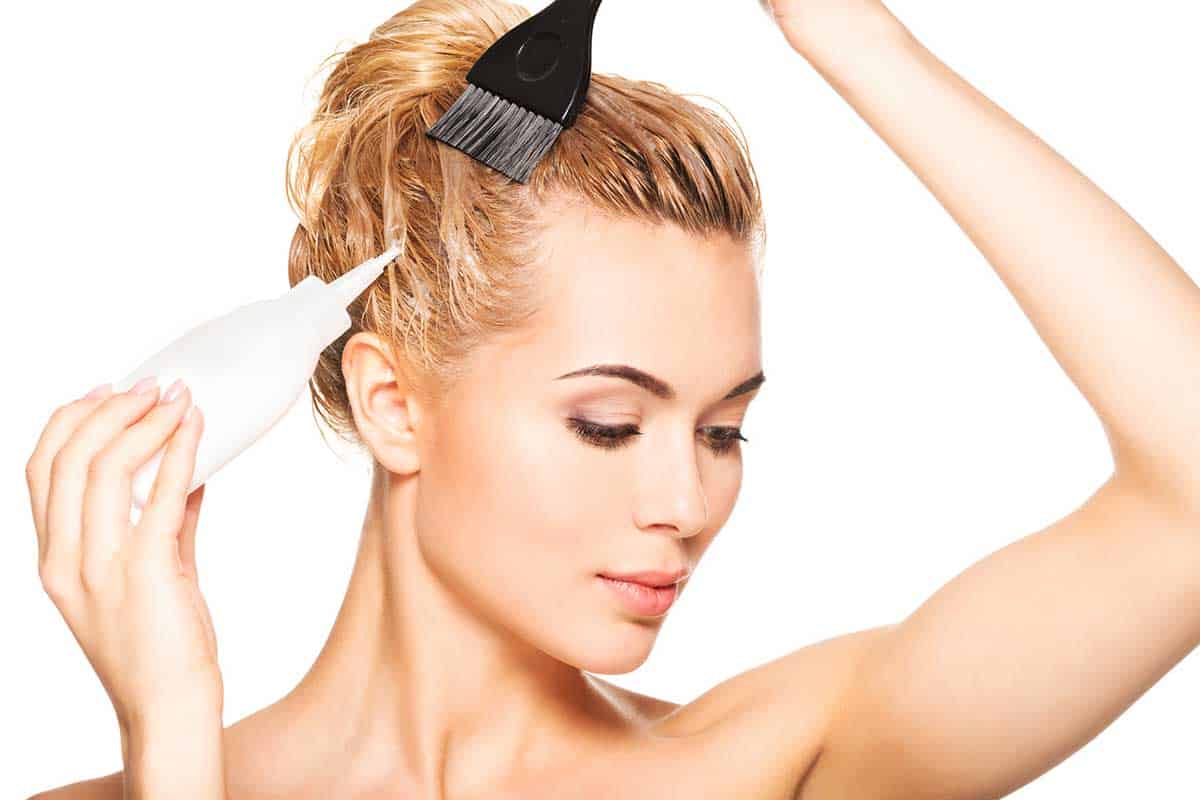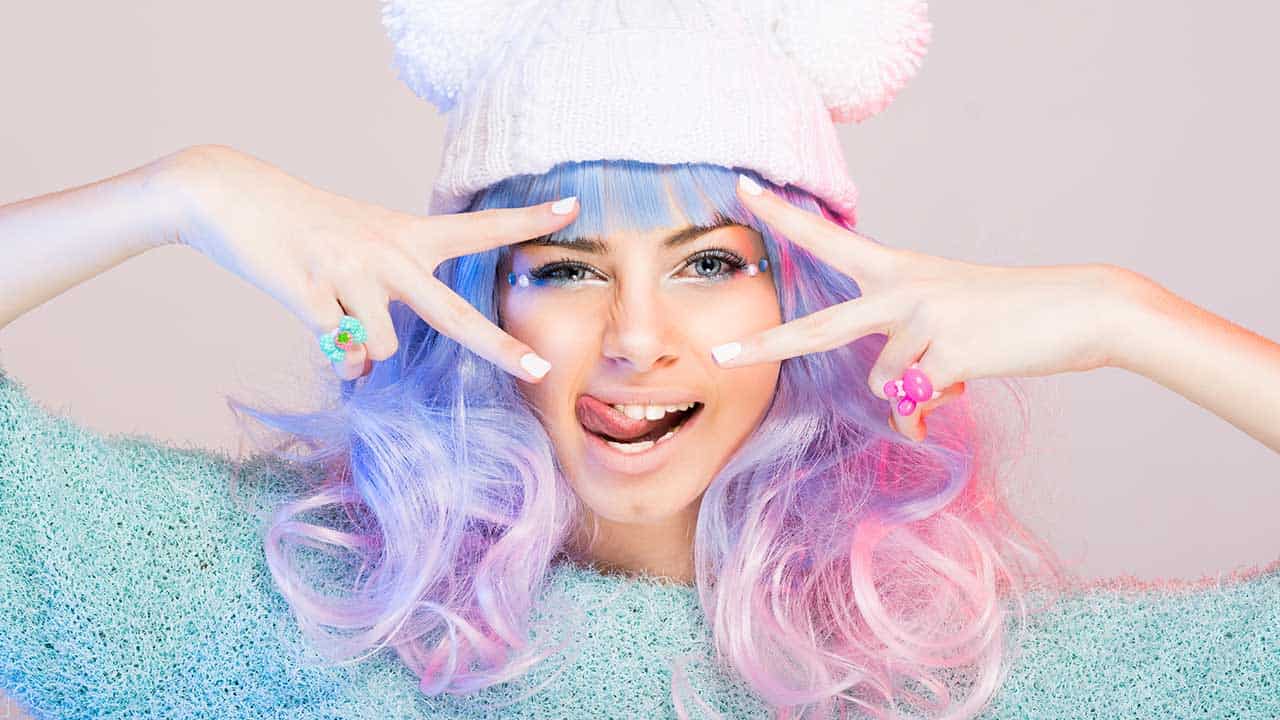When it comes to hair dye, instructions on the box often differ from what you see done in the salon. Most box dye instructions tell you to do it in the shower, while most stylists apply hair color directly to dry hair.
What’s going on here? Can you dye wet hair or not?
The short answer is yes, you can dye hair wet or dry. No one is going to stop you. The real question is whether or not you should put dye on wet hair. It’s actually pretty normal, even in salons, to apply dye to wet hair. Have you ever done a balayage with a root shadow? Typically the bleach is applied to dry hair, and after it is processed and rinsed out, the stylist will apply the darker shadow color directly to the wet hair.
So what’s the deal? While you should always trust your stylist when it comes to hair color, I hope to shed some light on their thought process. The biggest factor when it comes to whether you should dye your hair wet or dry is the formula of the dye.
There are pros and cons to dyeing hair wet or dry, depending on what kind of look you’re going for. We all know dye-related disasters are some of the hardest and most expensive mistakes to fix, so before you go in with that fresh rose-gold color, let’s go over the dos and don’ts of dyeing wet hair.

Table of Contents
Dyeing Wet Hair — Yeah or Nah?
I want to make this clear: You can absolutely dye wet or dry hair. The choice is yours. Let’s go over the pros and cons of putting dye on damp hair.
Pros
Hair Becomes More Absorbent When It Is Wet
When your hair is exposed to warm water, the cuticles open up and increase your hair’s porosity, meaning it gets ready to soak up all liquids that come into contact with it. This gives the color a chance to get more into the shaft than dyeing dry would allow for.
Easier to Get an Even Distribution of Dye
When your hair is wet, it’s a lot easier to make sure every strand gets a coating of hair dye. With dry hair, it can be easy to miss spots. A little moisture added to the dye makes it easy to work into all the hair, achieving an even distribution of dye.
Makes Clean-Up Easier
Let’s get real, it’s a lot easier to just glob a bunch of hair dye onto some gloves and lather it all in the shower than it is to try to do an at-home brush-and-bowl bit. I don’t know about you, but when I try to use the brush and bowl, my dye gets everywhere, and it makes cleaning up a pain in the neck.
Cons
Harder to Get an Even Application of Dye
While water makes it easier to get the dye onto every strand of hair, it’s overall less precise when it comes to color application. If you’re going for a drastic color change or you are attempting some carefully placed highlights, it’s best to apply the dye to dry hair for more control over the color application. If you insist on doing a drastic color change with wet hair, it’s best to keep some dye on the side before you rinse to go over any missed spots.
Water Can Make the Color Less Vibrant
If your strands are extremely dry or damaged, those thirsty girls will drink up water faster than dye, which can result in hair that is less vibrant or color that doesn’t last as long as expected. It’s not impossible to dye damaged hair wet, but it’s much easier to achieve good color results with healthy hair.
Hair Is More Prone to Damage When Dyed Wet
As mentioned before, when hair is exposed to warm water, the cuticles open up. The cuticle is a hair-protecting shield, and if you are using a dye that has an ammonia-based developer like most store-bought permanent box dyes, that can do some serious damage to the hair.
When hair is dry, the natural oils can help to protect the strands, which get washed away when the hair is wet. You may notice that nearly all stylists apply bleach directly to dry hair. It’s for this reason.
Best Types of Dye to Apply to Wet Hair

Not all hair dyes are created equal!
If you’re wondering, “Can I dye my hair wet?” what you should really be asking yourself is “What dye am I using?” If you are using permanent hair color, it’s best to not put that on wet hair.
Trying to go lighter with permanent hair color means that you are using bleach, and that requires both precision application and the extra protection of your hair’s oils. If you’re trying to go darker with permanent hair color, you will want the more even color application that dry hair can provide.
Instead of using permanent hair dye on dry hair, try these.
Semi-Permanent Dye
Semi-permanent hair colors contain no peroxide developers and no ammonia. Semi-permanent color only sits on top of the cuticle, rather than penetrating inside it. Since there’s no ammonia to penetrate the cuticle, the formulation is not greatly affected by the presence or absence of water.
A lot of fun colors like green, purple, and pink (Rose gold, anyone?) are available in semi-permanent dye formulations. These colors require that hair be bleached to really “pop,” and I personally recommend you leave the bleaching to the pros.
Demi-Permanent Dye
Demi-permanent dye is great if you’re looking for something that will last a bit longer than semi-permanent but isn’t quite as intense as a standard permanent box dye. It does contain some ammonia, which will penetrate the cuticle of the hair and make the color last up to five times as long as its semi-permanent counterpart.
The one drawback is that if your hair is dry and porous, it could soak up more water than dye if applied to wet hair. The formulation is meant to be temporary, so it shouldn’t be too affected by the presence of water. However, if your hair is dry, I would recommend applying the demi-permanent color to dry hair.
FAQs
What happens if you put hair dye on wet hair?
That really depends on the formula. Semi-permanent hair dye is not affected by the presence of water, so if you want to dye your hair while it is wet, it is best to use a semi-permanent hair color.
Can you dye wet hair with box dye?
You can, but the question really is whether or not you should. Hair dyes that use ammonia as a developer can cause damage to the hair, and if your hair already has its cuticle opened up from water, that can lead to overexposure.
Hair dyes that use bleach can also cause damage to the hair, and applying it to wet hair can lead to an uneven application. It is for this reason that I recommend applying permanent hair dye to dry hair.
Is box dye bad for your hair?
Box dye has been the bane of many hair stylists’ existence. Box dyes typically use ammonia as the developer, which does not mix well with professional hair colors and is prone to over-processing, resulting in damaged hair.
That said, I also understand the therapeutic effect of taking your hair color into your own hands. If you love the process of at-home hair color, my best advice is to stick to semi-permanent hair colors. If they require bleaching to really pop, leave the bleaching to a stylist.
So Wait… Can You Dye Hair Wet?
In short, you can dye hair wet or dry, depending on which dye you are using. While neither I nor any stylist would recommend using any sort of permanent box dye, if you are going to do so, apply the permanent box dye to DRY hair.
Semi- and demi-permanent hair colors can be used on wet hair. Because they are made to sit more on top of the hair rather than penetrating the cuticle, they are both less affected by the presence of moisture and less likely to cause damage to the hair during the dyeing process. Of course, it is always best to leave hair color to the professionals. Not only do they know the best techniques for dyeing hair, they also have the knowledge to pick a hair color that best suits your skin tone.
So what color are you thinking of getting next? Let us know in the comments!
0


